
How to Use Temperature Sensor : Examples, Pinouts, and Specs
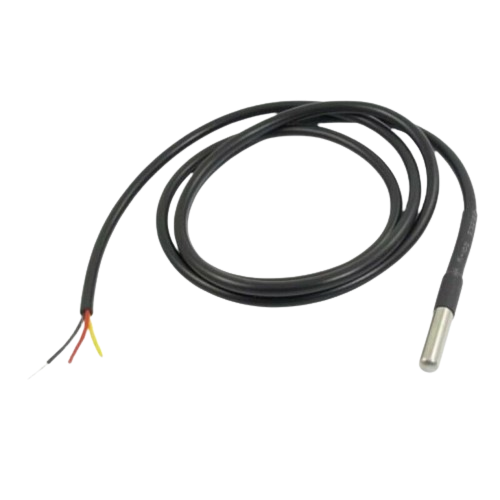
 Design with Temperature Sensor in Cirkit Designer
Design with Temperature Sensor in Cirkit DesignerIntroduction
A temperature sensor is a device that measures the temperature of its environment and converts the measurement into an electrical signal for monitoring or control purposes. These sensors are widely used in various applications, including HVAC systems, industrial automation, medical devices, and weather monitoring systems. They are essential for maintaining temperature-sensitive processes and ensuring safety in numerous industries.
Common applications and use cases:
- Home automation systems (e.g., smart thermostats)
- Industrial temperature monitoring
- Medical equipment (e.g., thermometers, incubators)
- Environmental monitoring (e.g., weather stations)
- Automotive systems (e.g., engine temperature monitoring)
Explore Projects Built with Temperature Sensor
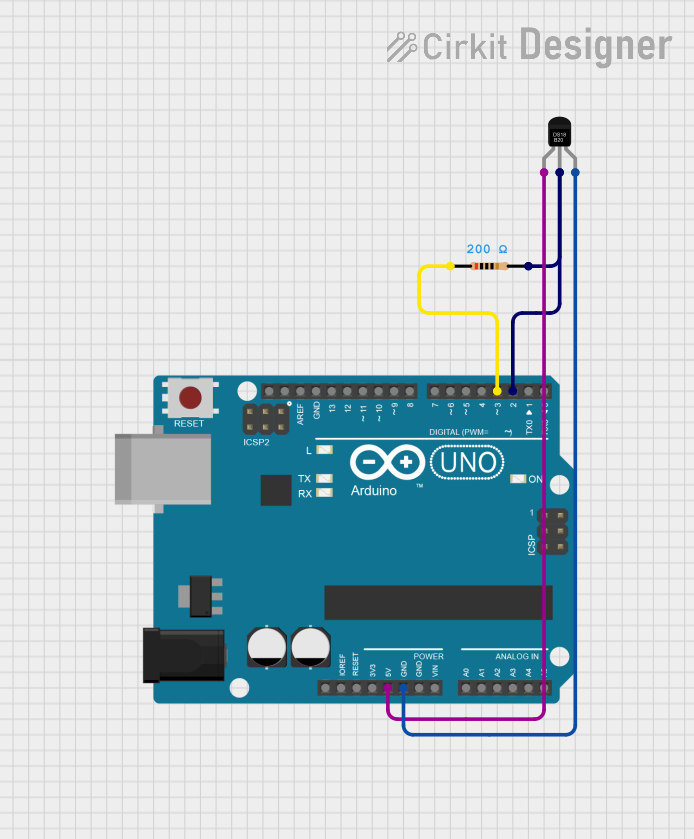
 Open Project in Cirkit Designer
Open Project in Cirkit Designer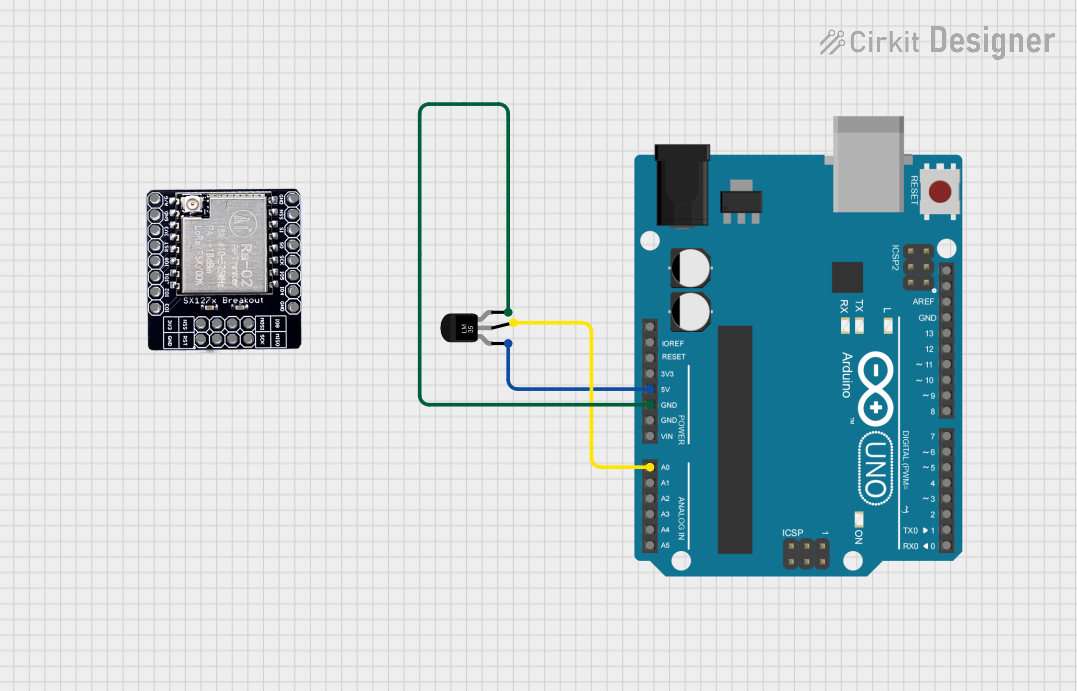
 Open Project in Cirkit Designer
Open Project in Cirkit Designer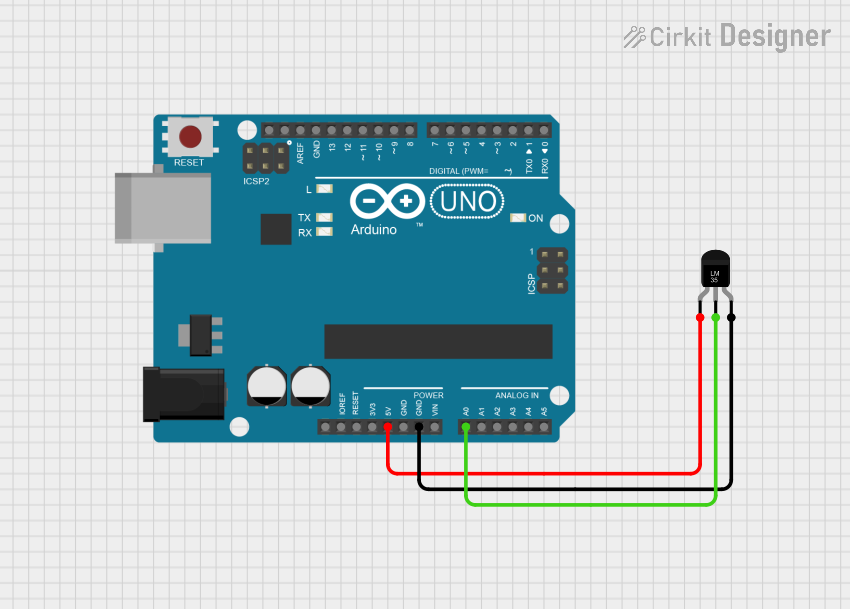
 Open Project in Cirkit Designer
Open Project in Cirkit Designer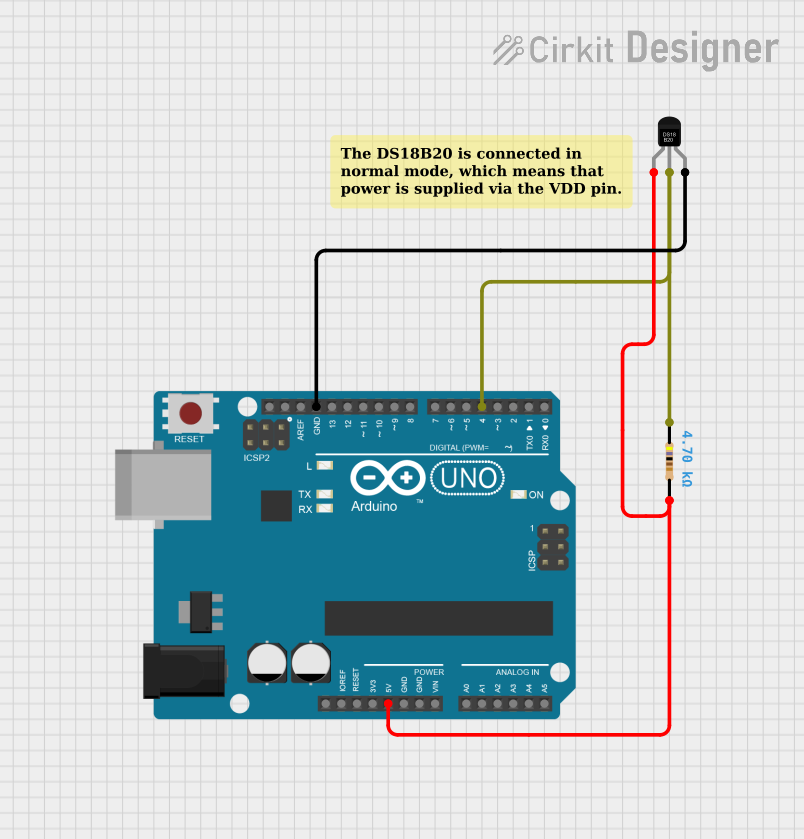
 Open Project in Cirkit Designer
Open Project in Cirkit DesignerExplore Projects Built with Temperature Sensor

 Open Project in Cirkit Designer
Open Project in Cirkit Designer
 Open Project in Cirkit Designer
Open Project in Cirkit Designer
 Open Project in Cirkit Designer
Open Project in Cirkit Designer
 Open Project in Cirkit Designer
Open Project in Cirkit DesignerTechnical Specifications
Below are the general technical specifications for a common analog temperature sensor, such as the LM35:
| Parameter | Value |
|---|---|
| Operating Voltage | 4V to 30V |
| Output Voltage Range | 0V to 1.5V (for -55°C to 150°C) |
| Temperature Range | -55°C to 150°C |
| Accuracy | ±0.5°C (at 25°C) |
| Output Sensitivity | 10mV/°C |
| Power Consumption | Low (typically <60µA) |
Pin Configuration
The LM35 temperature sensor typically has three pins:
| Pin | Name | Description |
|---|---|---|
| 1 | VCC | Power supply (4V to 30V) |
| 2 | VOUT | Analog output voltage proportional to temperature |
| 3 | GND | Ground connection |
Usage Instructions
How to Use the Temperature Sensor in a Circuit
- Power the Sensor: Connect the VCC pin to a power source (e.g., 5V from an Arduino UNO) and the GND pin to ground.
- Read the Output: Connect the VOUT pin to an analog input pin on your microcontroller or ADC (Analog-to-Digital Converter) to read the voltage output.
- Convert Voltage to Temperature: Use the sensor's sensitivity (10mV/°C for the LM35) to calculate the temperature. For example, if the output voltage is 250mV, the temperature is 25°C.
Important Considerations and Best Practices
- Avoid Noise Interference: Use decoupling capacitors (e.g., 0.1µF) between VCC and GND to reduce noise.
- Proper Placement: Place the sensor away from heat sources or airflow that could affect accuracy.
- Calibration: For critical applications, calibrate the sensor to account for any offset or environmental factors.
- Voltage Limits: Ensure the input voltage does not exceed the sensor's maximum rating to avoid damage.
Example: Connecting the LM35 to an Arduino UNO
Below is an example of how to read temperature data from an LM35 sensor using an Arduino UNO:
// Define the analog pin connected to the LM35 sensor
const int sensorPin = A0;
void setup() {
Serial.begin(9600); // Initialize serial communication at 9600 baud
}
void loop() {
int sensorValue = analogRead(sensorPin); // Read the analog value from the sensor
float voltage = sensorValue * (5.0 / 1023.0); // Convert ADC value to voltage
float temperature = voltage * 100.0; // Convert voltage to temperature (10mV/°C)
// Print the temperature to the Serial Monitor
Serial.print("Temperature: ");
Serial.print(temperature);
Serial.println(" °C");
delay(1000); // Wait for 1 second before the next reading
}
Troubleshooting and FAQs
Common Issues and Solutions
No Output or Incorrect Readings:
- Cause: Incorrect wiring or loose connections.
- Solution: Double-check the wiring and ensure all connections are secure.
Fluctuating Readings:
- Cause: Electrical noise or unstable power supply.
- Solution: Add a decoupling capacitor (e.g., 0.1µF) between VCC and GND.
Output Voltage Exceeds Expected Range:
- Cause: Input voltage exceeds the sensor's maximum rating.
- Solution: Ensure the input voltage is within the specified range (4V to 30V).
Temperature Readings Are Inaccurate:
- Cause: Environmental factors or sensor placement.
- Solution: Place the sensor in a stable environment and away from heat sources or airflow.
FAQs
Q: Can the LM35 measure negative temperatures?
A: Yes, the LM35 can measure temperatures as low as -55°C. However, for negative temperatures, the output voltage will be below 0V, which may require additional circuitry to read.
Q: Can I use the LM35 with a 3.3V microcontroller?
A: While the LM35 typically operates with a minimum of 4V, some variants or similar sensors (e.g., LM35DZ) may work with 3.3V. Check the datasheet for compatibility.
Q: How do I improve the accuracy of the sensor?
A: Use proper calibration, minimize noise with capacitors, and ensure stable power supply and optimal placement.
Q: Is the LM35 waterproof?
A: No, the LM35 is not waterproof. For outdoor or liquid temperature measurements, use a waterproof temperature sensor like the DS18B20.
By following this documentation, you can effectively integrate a temperature sensor into your projects and troubleshoot common issues.